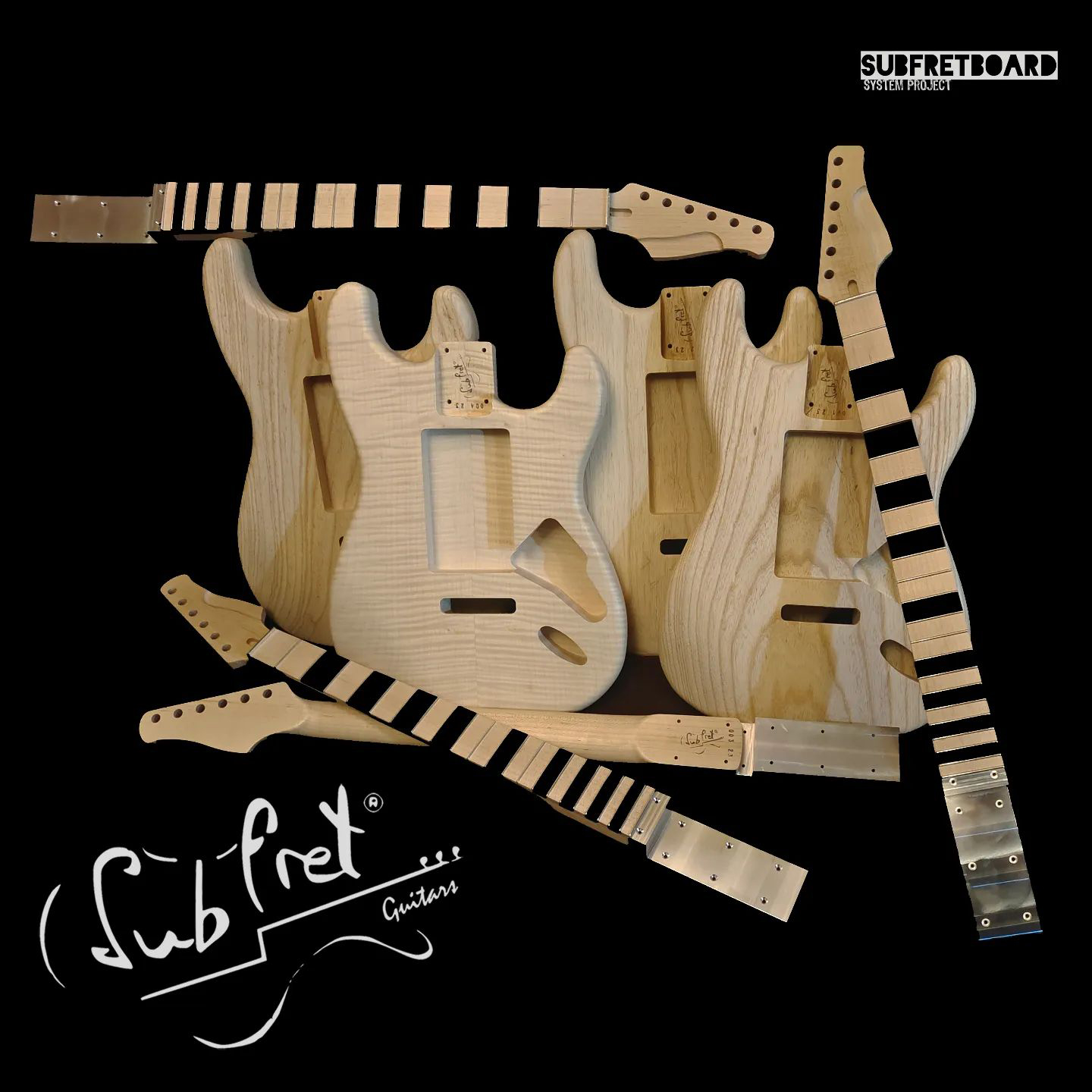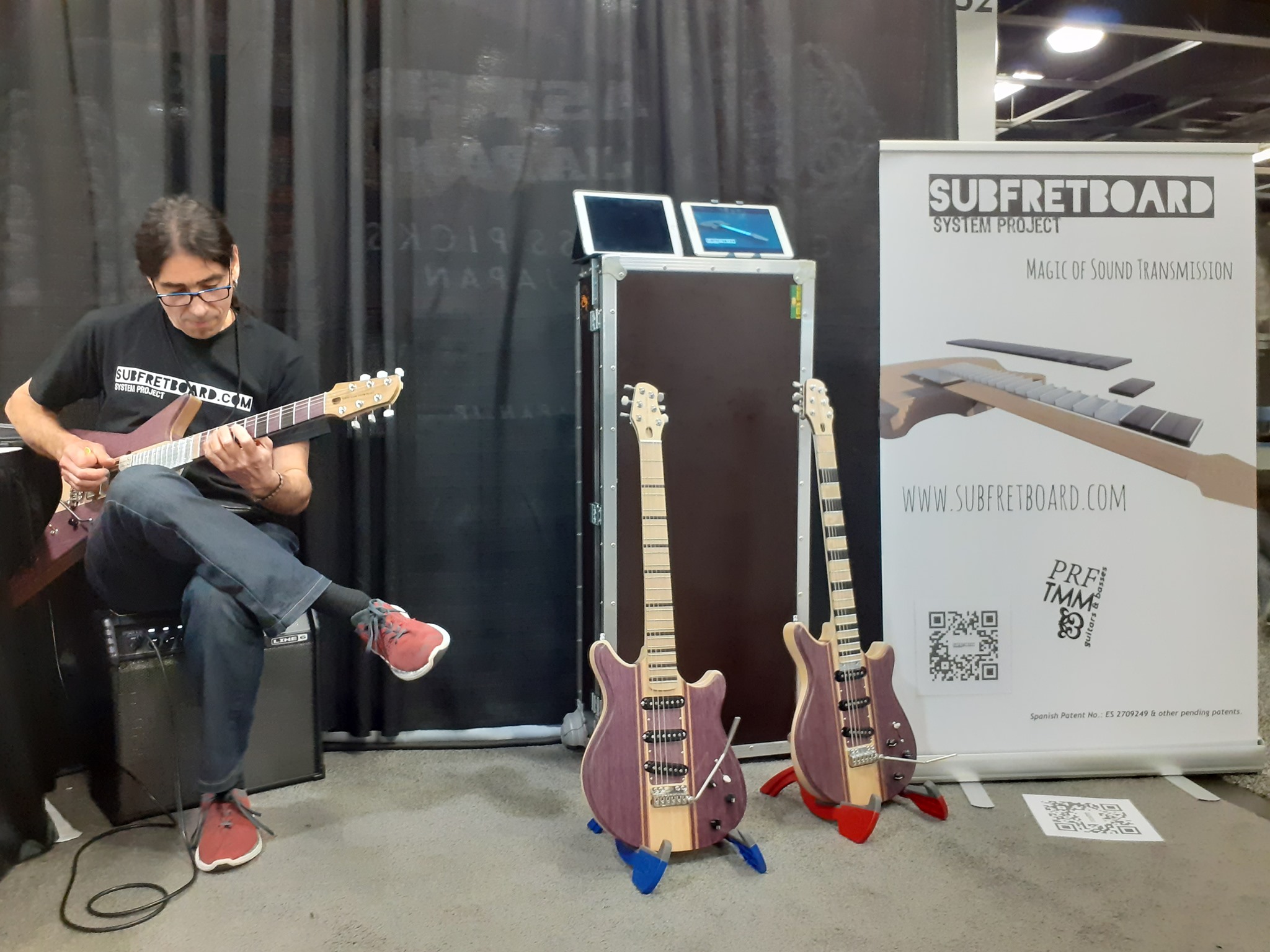
Subfretboard: a revolutionary idea that merges fretboard, nut and frets in one piece
The electric guitar is a formidable instrument, there is no doubt about it. But like any other human construction, there is room for improvement. One of the characteristics that electric guitarists especially value is the sustain and the ability to obtain a balanced sound between all the strings of the instrument. In response to this long-standing aspiration, the Subfretboard system appears.
Javier Alonso is its creator. He has been a luthier for almost 30 years, and his career in this world began after finishing his classical guitar studies. At the school where he taught he met a Polish luthier who had a small guitar factory. " I started there as a tester of his guitar models until I ended up training with him", says Alonso. It was a few years later when he decided to go solo and set up his own workshop.
Simultaneously, Alonso also studied harmony and improvisation technique, broadening his knowledge of the electric guitar. This allowed him to detect some shortcomings "especially at the level of volume compensation between strings, as this imbalance is intrinsic to the design of the instrument itself," he explains.
In this search for solutions to improve the sound of the electric guitar, he met Pablo del Real, who today is his partner in this project that has been underway since 2016.
A system that increases sustain and resonance in your guitar.
So what is the Subfretboard founders' answer to the problem of string unbalance? Their idea starts with a piece of Zicral where fretboard and frets are one. Zicral or 7075 aluminum is an alloy of aluminum with several other materials (mainly zinc) with a perfect combination of hardness, low density, thermal properties and ease of polishing. Alonso says that the piece goes along the entire length of the neck, enters the body of the guitar, underneath the pickups, and "from this piece emerge the frets themselves".
This system requires facing a new way of construction, different from the traditional one, since "between fret and fret the individual pieces of wood are placed, forming the fretboard of the guitar", he explains.
The Subfretboard, according to its inventor, gives the guitar more balance between the strings. "It completely balances the volume between all the strings by a matter of the very resonance of the string stepped on the fret." In addition to resonance and balance between the strings, Alonso also claims that his system increases sustain, thus forming the three pillars on which the benefits of this fretboard system rest.
For the most skeptical, the creators of Subfretboard have published a frequency study, from which Alonso extracts that "from a frequency of approximately 2200 kHz, the response of most guitars drops a lot and very fast. With the Subfretboard system it stays much longer, the sound fades out more slowly".
The importance of wood in Subfretboard
During the interview with Javier Alonso, the question arises about the relevance of the wooden parts in the guitar fretboard. According to Javier, the wood of the fretboard still has its function and impact on the final result of the instrument's sound. "When assembling instruments without the fingerboard and then with it, I have noticed the difference in terms of resonances and frequency distribution," he says. "Although the resonance effect is not decisive, it does contribute to the final result of the sound," he adds.
As for the combination of several woods in the same fingerboard, Alonso believes that it will always depend on the density and type of wood used, although he believes that acoustically, the effect goes practically unnoticed. A separate issue, however, is the aesthetic question, one of the qualities that most attracts guitarists. "We have witnessed how much the combination we make for the inlays has been liked." This is undoubtedly another of the enormous possibilities of the Subfretboard system: the endless possibilities of color and materials when configuring the fretboard.
How is the maintenance of the frets in the Subfretboard system project?
Since we announced a few months ago the future incorporation of this new system developed by Javier Alonso and Pablo del Real, many musicians and luthiers have expressed their doubts about the maintenance of the fingerboard without frets inserted in the wood.
Alonso explains that there is no need to fear the maintenance of the frets in this system as they offer two options. The standard option presents the piece untreated. This, due to its hardness, would allow four rectifications during the life of the instrument. Any guitar connoisseur knows that only an instrument subjected to many hours of work over many years may need them. Only in the unlikely event of exceeding these four rectifications, "the wood of the individual parts of the fretboard itself would need to be trimmed one by one," he explains.
But to avoid even that remote possibility, the creators of the subfretboard offer to anodize the piece. This electrolytic process covers the piece with a 20-micron layer, and according to Alonso "for practical purposes and with the use given to it in the guitar, it is indestructible. The durability is placed at the level of steel, with this treatment the frets will last forever".
Even so, the wear of the frets depends on each musician, so the inventor of the sub-fretboard explains that "with a more or less normal fingering, even if it is a little strong, four fret corrections would be more than enough, because these frets are harder than those with 18% steel. We have made some calculations and they can be equated as if they had approximately 25% steel, so the durability is greater.
The secret behind stability in subfret guitars
For some interested parties, the presence of a metal piece between the fretboard and the neck of the guitar itself raises questions. What about the weight? There is no reason for concern: the balance of the guitar assembled with Subfretboard is total, as these guitars employ the same type of construction as any other bolt-on neck guitar. The weight of the metal piece is not greater than that of a normal neck without the system. On the contrary, the presence of the piece and the fact that it is screwed in the central part of the body adds stability to the whole.
The only difference in these guitars is that the neck, having this metal piece, has less density in the set. "The dimensions of the neck, from the back profile of the neck to the top point of the fretboard are identical to a normal guitar. The only difference is that there is less wood in the neck as opposed to a conventional neck due to the presence of the metal piece," adds Alonso.
Regarding weight, the prototypes confirm that it is practically the same. "I am now making a guitar for a customer that is going to weigh two and a half kilos in total. The metal piece will account for about 200 grams of the weight, but the wood it replaces will be about the same. In the end, everything is counterbalanced and, perhaps, depending on the woods used, there may even be a few grams less than what would be left in a guitar with normal characteristics", confirms the luthier.
Maderas Barber and Subfretboard, together from the start
Maderas Barber has been present from the beginning of this adventure, helping the creators of the Subfretboard system and backing the initiative.
New developments in the world of the electric guitar happen every day. It is easy to lose count of all the new ideas that arise, some with little substance to back them up. But at Maderas Barber we believe in the potential of the Subfretboard system and we want you too to witness the advantages of it.
Maderas Barber is the only authorized distributor of the Subfretboard system. In addition, our best woods are used in the construction of the necks and bodies. Due to its exclusivity and the small number of units for sale, only a few builders will be able to use the Subfret system. Javier is clear: "the idea is to offer a complete, high quality guitar for those musicians who are looking for a unique and personalized guitar".
Subfretboard: The success of a NAMM-driven launch
The official presentation of the system took place at NAMM 2020. Although the initial idea was to offer the patent to an international manufacturer, the great acceptance of the product at the show led Alonso and his partner, Pablo del Real, to decide to launch the Subfret brand on their own. "Everyone made good comments. It was something different, we were talking about sound, something that brought a natural thing, because what the piece brings is that balance. Being able to work with that dynamic in a very natural way, from the instrument itself, without the need to process the sound with pedals or in a studio treating the signal you record," explained Alonso. Even Tom Anderson, renowned luthier, congratulated the team for their work and product during the fair. The experience at NAMM gave them the confidence that they were on the right track and pushed them forward.
In addition, the brand has the backing of renowned guitarists and luthiers of international prestige, confirming the quality and effectiveness of its patented system. Among them are names such as Jonah Goldstein, Julian Kanewski, or Carlos Morado. Their recognition and endorsement are a sign of the excellence and innovation that characterize the Subfretboard System.
Discover the new way to build guitars with Subfretboard
Which one do you choose?
Subscribe to our newsletter and get 10% discount to become a VIP Premium customer.
Do you prefer to receive our news by Whatsapp? Join our diffusion list in 1 click.
Subscribe to our newsletter and get 10% discount to become a VIP Premium customer.
Do you prefer to receive them by Whatsapp? Join our diffusion list in 1 click.















